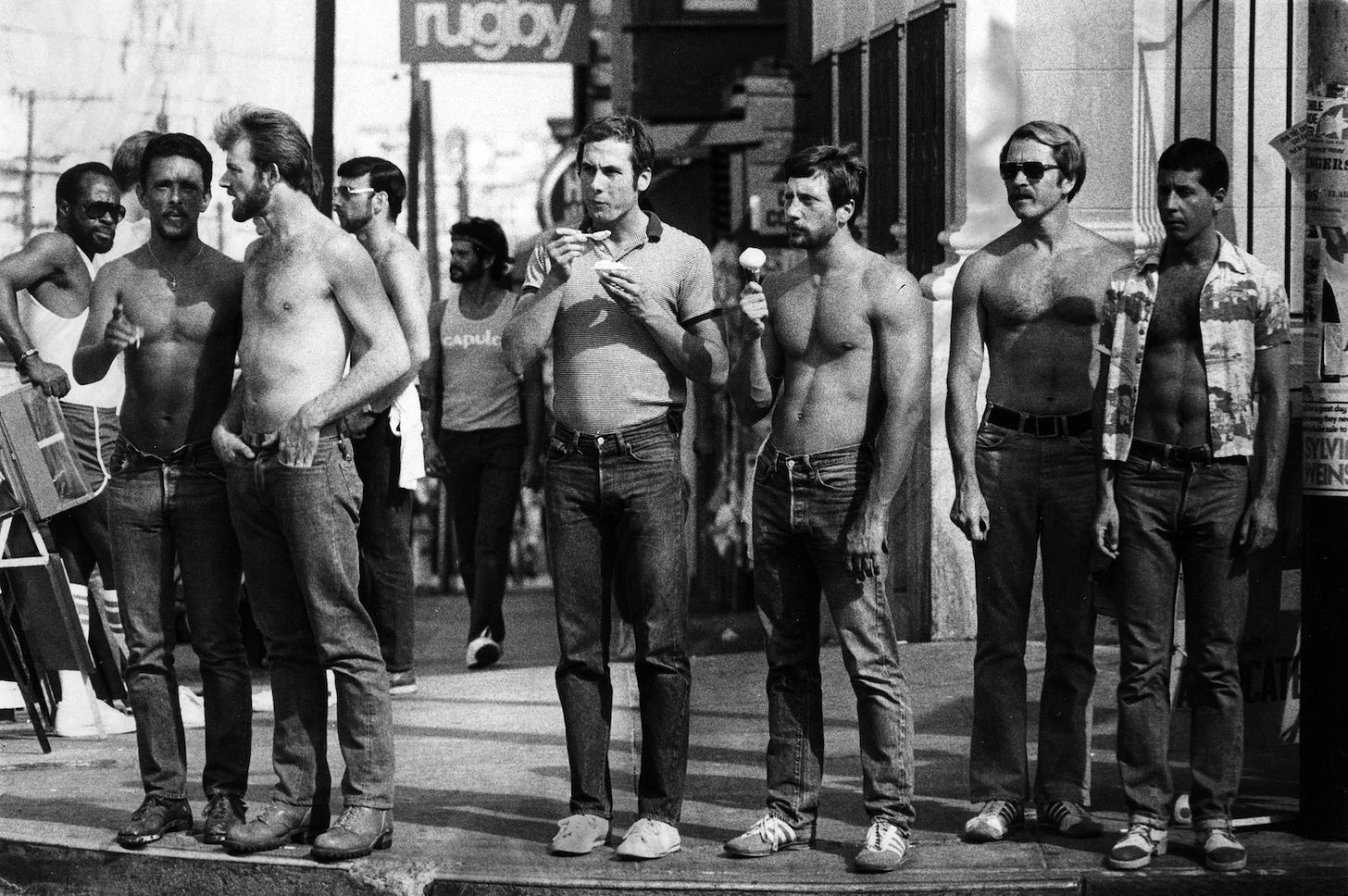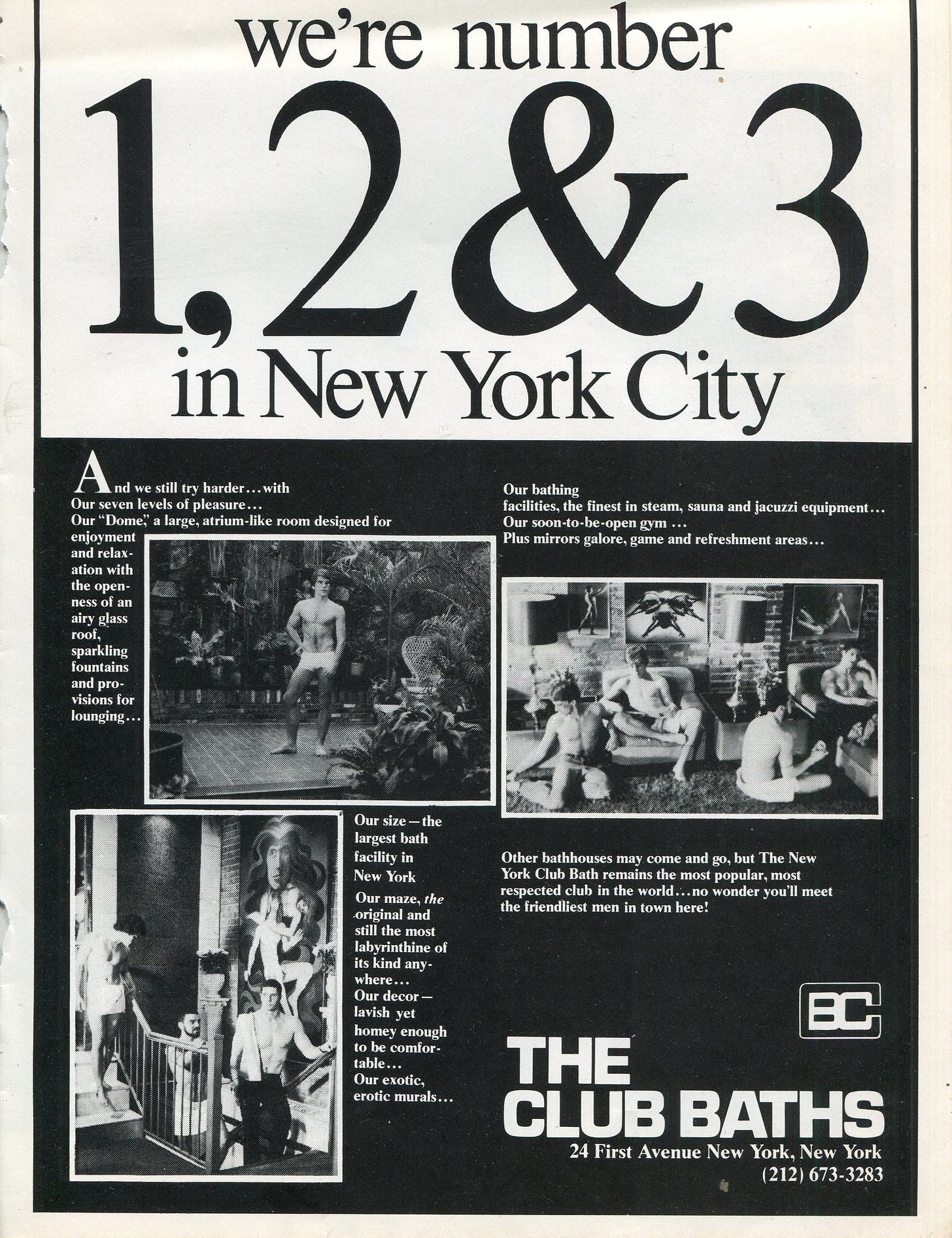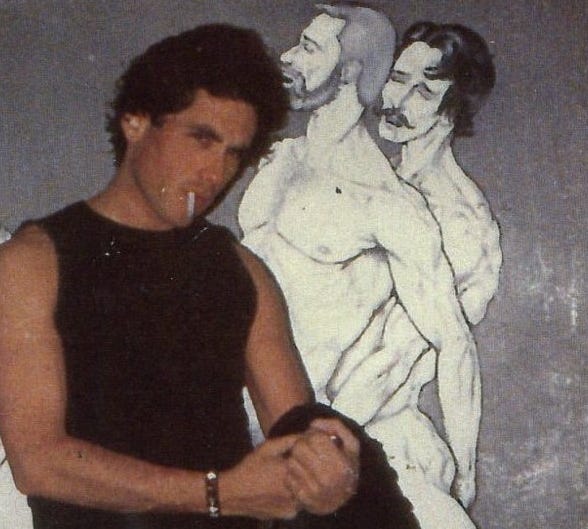The Early Days of HIV/AIDS - Storm Clouds on the Horizon: 1976-1980
Overconfidence, Elevated Risk-Taking, Parabolic Rise in STDs, Exotic Diseases Begin to Appear, Cavalier Attitudes Towards Sex and Infection, Chronic, Persistent Illnesses
Previous Entry - The Golden Age: 1976-1980
“What’s the big deal about sex with strangers while you’re in a relationship? Sex doesn’t have to mean anything.” Then, in his half-hearted, perfectly awful Jayne Mansfield imitation, he added, “We can have our cake and eat it too!”
-Richard Hendlowitch to Richard Berkowitz (hustler turned AIDS/Safe Sex Activist), NYC 19771
When you’re 20 years old, you’re indestructible. You can drink the most sugar-laden one dollar shooters all night long at the bar with your 30 friends during Spring Break and barely have a hangover the next day. In the evening, you’re ready to do it all over again. Your body is a powerful machine, able to absorb all kinds of toxins and spit them out as it resets itself during sleep. “If I can handle this kind of partying, I can handle even more”, you think to yourself as you decide to drink or smoke or snort the harder stuff. “No big deal”, you say to yourself as you brush it off without a second thought.
The heady years of youth invite all sorts of risk-tasking in order to push boundaries and stake new ground. This is how one gains experience as they navigate through early adulthood. In time, experience begets wisdom. The working assumption is that you have time.
Like everything in life, there are limits, and these limits come with a cost. By your late 20s you start to notice that drinking in excess decreases your productivity at work the next day, at least for the first few hours. You also start to learn how various types of alcohol can effect you in different ways. Bourbon may make you angry and lash out (even physically), others might make you cry. Maybe white wine has you making a fool out of yourself in public?
No longer are you the 18 year old recounting your drinking feats from the previous night with your friends (while older people within earshot get annoyed as you pedantically list each and every type of alcohol you drank, and how much of it, exaggerating both numbers for effect in order to gain ‘credibility’ with your peers). Rather than waking up fresh the next day with the prospect of another night of heavy partying already planning for this evening, you either feel embarrassment for something that you did (or didn’t do and just imagined) the previous night, self-loathing, or even mild, temporary depression. These feelings are easily dealt with as they pass rather quickly, something that you’ve gone on to learn over the past several years. “At least I’m not an addict”, you say to yourself to pat yourself on the head in order to build up the courage to go out in public again.
The freedom and resilience of youth combined with the natural temptation to take risks creates a condition of false confidence that leads to this feeling of personal invulnerability. “Oh man, did you see how hammered Matt got last night! That fucker can party!”, tells everyone that Matt has an elevated social standing due to his risk taking behaviour. This acknowledgement only encourages a repeat of his behaviour, or even an escalation in order to top himself the next time. Party stories are like street fighting scars; public wounds that show that you are the ‘real deal’, lending you the veneer of authenticity. Fearless and always “up for it”, you and your friends are certain in the fact that nothing can do you any harm. You are immmortal.
This sense of invulnerability get shaken when you hear about that guy from high school who drowned in the lake at the cottage after having a few too many drinks and deciding to jump in off of the pier, never to resurface. It also takes another hit when you first find out about that girl your buddy dated…..the one that OD’ed on some bad product. It gets really serious when your buddy, a natural scrapper, picks a fight with the wrong guy at a nightclub and gets stabbed on the sidewalk outside, bleeding out before the paramedics show up. These losses quickly add up, teaching you that life is much more fragile than you once thought. If you’re one of the smarter ones, you begin to moderate your behaviour due to the instinctive impulse of self-preservation. Unfortunately, some will already be too far gone into the tight grip of addiction or roller-coaster psychological thrill that comes with living on the edge to do so.
Warning Signs
STDs (Sexually Transmitted Diseases) began to spread more quickly among both heterosexual and homosexual Americans in the 1960s thanks to the Sexual Revolution, climbing to even higher highs over the course of the next decade (despite a decline in gonorrhea among heterosexuals beginning in 1975 and lasting until 1997). Thanks to the development of newer antibiotics treatments that were available to the public at the time, these infections were little more than annoyances that only required a visit to the clinic and a temporary time out from further sexual activity.
For gay men, going to the free clinic to see your “clap doctor”2 meant “getting a shot and a date”. Having STDs was seen as a badge of honour for many, indicating that you were on the front line of this revolution for gay rights, an active participant willing to take all the blows that came with it in order to advance the cause. The ease with which these STDs were treated made them the source of many inside jokes in these gay communities. This easy treatment also lulled them into a false sense of security.
Richard Berkowitz (pictured above in Key West, Florida in the late 1970s) was a hustler turned AIDS/Safe Sex Activist. He has left us with some valuable literature that sheds some much needed light on the 70s and 80s, and from which we will now excerpt:
Rich (Henlowitch) and I (Richard Berkowitz -ed.) went to the baths several times that year, which posed a concern: sexually transmitted infections (STIs). Gay bar guides ran public service ads urging gay men to get tested every three months. Rich knew about the two free STI clinics run by gay men for gay men – the St. Marks Health clinic located a block from school and the Gay Men’s Health Project in Sheridan Square. I dreaded going alone but not with Rich. We’d share a joint on the streets as we walked to the clinic (cops left us alone back then) and make slut jokes while filling out our “Patient Sexual History” forms.
“Excuse me,” Rich told the clinic receptionist as he handed us clipboards, “my friend here is gonna need much more paper than this.”
My laughter ended with a Q-tip twisted into my urethra to test for gonorrhea. Rich took it all in stride: “Pills, shots and appointments aren’t pleasant, but look at all the fun we have. Once in a while, you gotta pay the piper.” But that didn’t ease my squeamishness.3
Alongside the first flourishing of personal freedom and (highly localized) public acceptance, increasing self-confidence, rising political power, community-building, casual sex on demand, and increasingly risky sexual and drug-taking behaviour, came a cavalier attitude towards STDs. Promiscuous and sexually adventurous (redundant) gay men began to collect STDs like young boys used to collect baseball cards.
Berkowitz:
Sexually transmitted infections (STIs) were rampant among sexually active urban gay men in 1980 ... There was a growing outbreak of sexually transmitted intestinal parasites that were afflicting the sexually active community, but gay men were being hit hardest ...
I began noticing that more and more of my friends were getting infected with herpes. Seeing puss oozing out of sores on their lips led me to subtly examine my sexual partners and clients [Berkowitz, although a Rutgers grad, worked as a hustler, ie., a male prostitute, for many of these years], but there was no way to eliminate the risk ...
I looked in the mirror and saw that I was jaundiced. Here it was at last, hepatitis, and I hated it. ... A lot of researchers were alarmed at the staggeringly high CMV infection rates among sexually active gay men ... My medical folder was becoming disturbingly thick.
Some of these men were transforming themselves by way of their behaviour into Walking Biohazards.






